Wampum Belts
Kimberly Boissiere and Jeremie Caribou
Wampum Belts
- Wampum is derived from the Algonquian word “Wampumpeague”, meaning a “string of white shell beads”. These beads were also used as currency during the fur trade in Dutch and English colonies until the 1660’s.
- Wampums are visual memory keepers, recording history and communicating ideas.
- Beaded patterns represent a person, nation, event, invitation, shared values, and understandings/agreements between two or more parties.
- Traditional wampum belts were used as covenants and petitions for understanding.
- The Haudenosaunee used wampum belts of varying sizes for diplomatic meetings (treaties) with Europeans and other First Nations.
- From the early 17th Century until the early 19th Century, Wampum belts were used to record and legitimize formal or international agreements (treaties) between nations.
- Some Wampum belts have been kept and preserved for the significant value they possess, such as oral agreements (treaties) made between nations concerning shared land and territory.
- To preserve the value of oral agreements (treaties) translated through Wampum belts, agreements were occasionally announced publicly to community members.
- Wampum belts were used to identify the significance of treaties between nations to share the territory for hunting or agriculture, passed on by knowledge keepers from generation to generation.
Dish with One Spoon

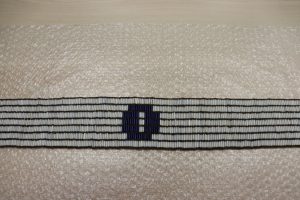
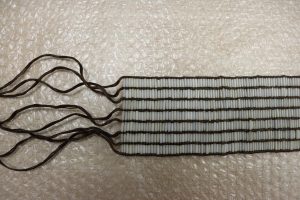
Photos by: Kimberly Boissiere
The Two Row Wampum Treaty Belt
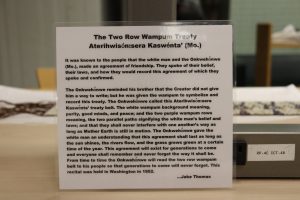
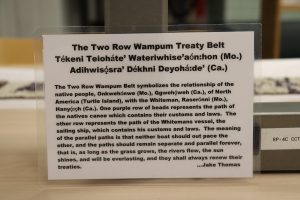
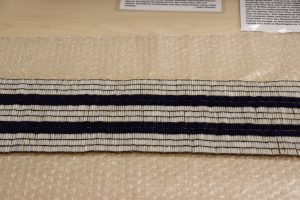
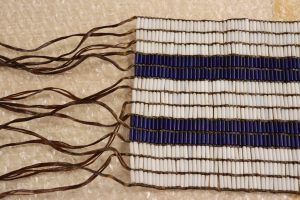
Photos by: Kimberly Boissiere
The Six Nations & George Washington Belt
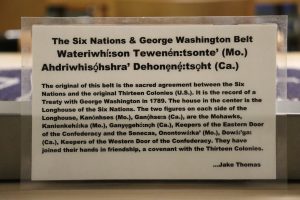
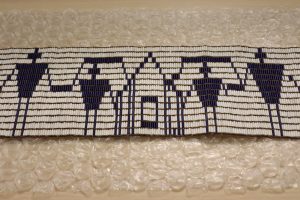
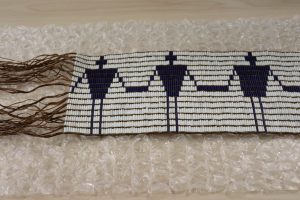

Photos by: Kimberly Boissiere
